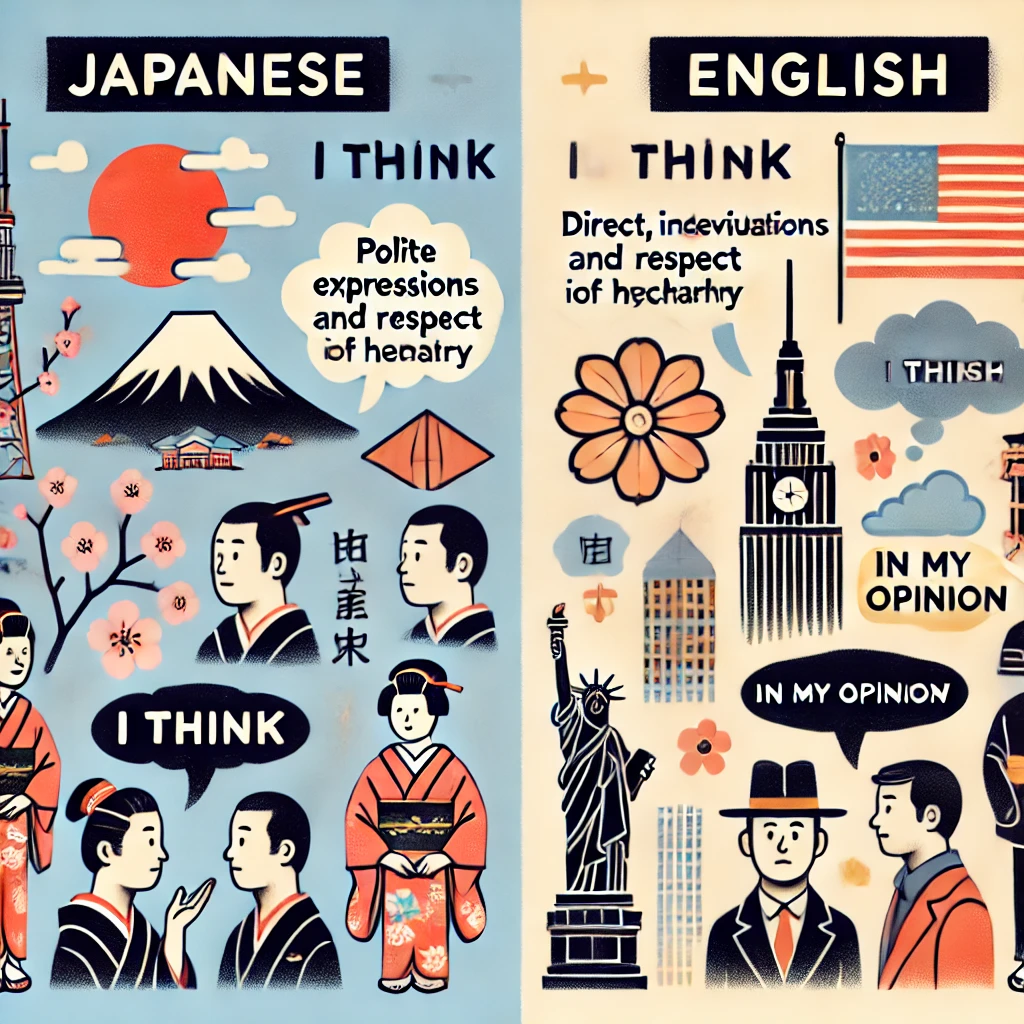— Exploring Linguistic Backgrounds and Cultural Influences —
Introduction
Japanese and English are two languages spoken and studied across the globe. While both serve as vital tools for communication, their structures, usage, and the cultures they reflect are remarkably different. Language isn’t just a means of exchanging information—it’s a mirror of the values, customs, and social norms of its speakers. In this article, we’ll explore the differences between Japanese and English from both a linguistic and cultural perspective, making the contrasts easy to understand.

Need a quick break? Try Rocket Now! Get 5,000 Yen Coupon!
1. Linguistic Backgrounds
Japanese
- Agglutinative language: Japanese builds meaning by adding particles and auxiliary verbs to words, allowing for detailed nuance.
- Word order: The typical sentence structure is Subject-Object-Verb (SOV).
- Writing systems: Japanese uses three scripts—kanji (Chinese characters), hiragana, and katakana.
- Politeness levels: There are complex systems of honorific and humble forms, which change depending on the relationship with the listener and the situation.
English
- Inflectional language: English relies on word order, prepositions, and suffixes to show grammatical relationships.
- Word order: The standard structure is Subject-Verb-Object (SVO).
- Writing system: Only the alphabet is used.
- Formality: While English distinguishes between formal and informal language, it does not have as intricate a system of honorifics as Japanese.
2. Cultural Influences
How Japanese Reflects Its Culture
- Ambiguity as a virtue: It is often considered polite to be indirect or to read between the lines—what’s left unsaid can be as important as what’s spoken.
- Group harmony: Japanese emphasizes the group over the individual, and this is reflected in communication styles that avoid confrontation.
- Respect and humility: Showing respect for others and downplaying oneself are core values, deeply embedded in language through various levels of politeness.
How English Reflects Its Culture
- Clarity and directness: English speakers value stating opinions and intentions clearly.
- Individualism: Self-expression and standing out as an individual are encouraged, which is mirrored in language use.
- Efficiency and logic: English favors concise, logical statements, especially in written communication.
3. Misunderstandings Born from Differences
Without an understanding of these language and cultural differences, communication between Japanese and English speakers can easily go awry. For example, Japanese indirectness may seem vague or evasive to English speakers, while English directness may come across as blunt or even rude to Japanese ears. Recognizing these underlying patterns leads to better and deeper cross-cultural communication.
日本公式サイト【Nord VPN】
Conclusion
Japanese and English are fundamentally different—not just in grammar and vocabulary, but in the cultural values they express. Learning about these differences is more than a language lesson; it’s a step towards appreciating and respecting another culture. Language learning opens new worlds, and by understanding both the words and the worlds they come from, we enrich our own perspectives.



コメント